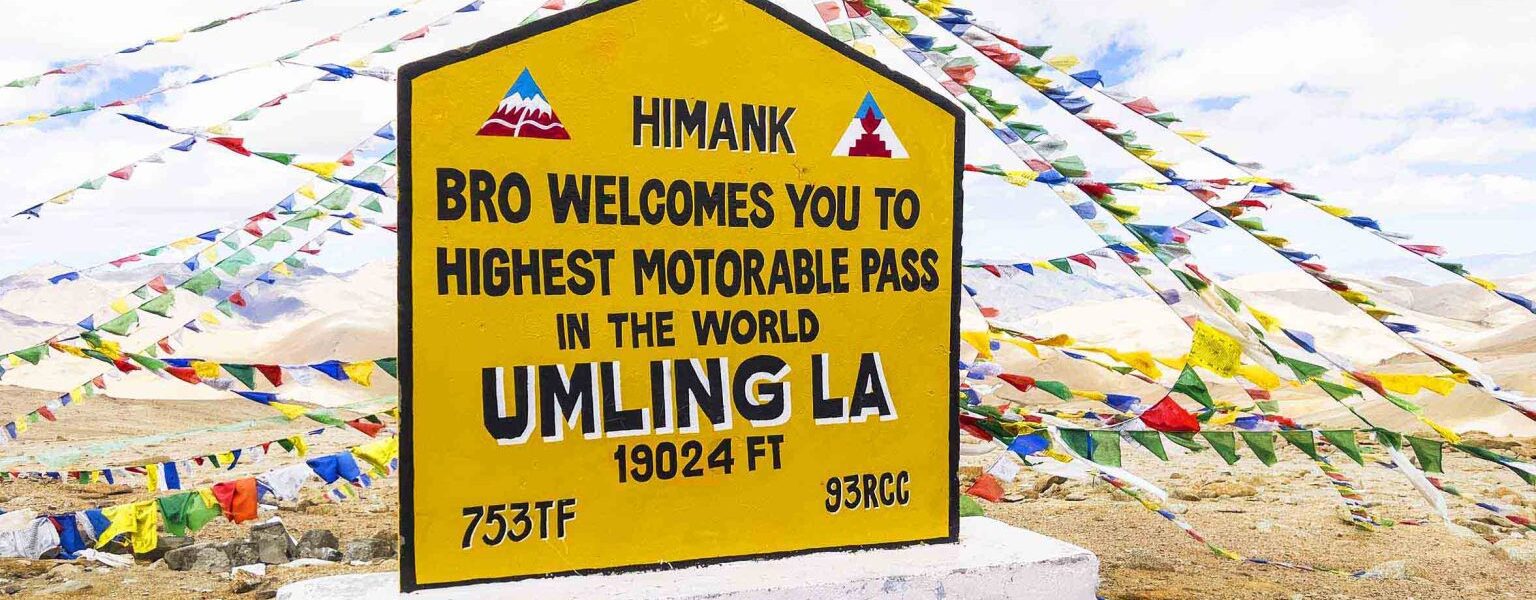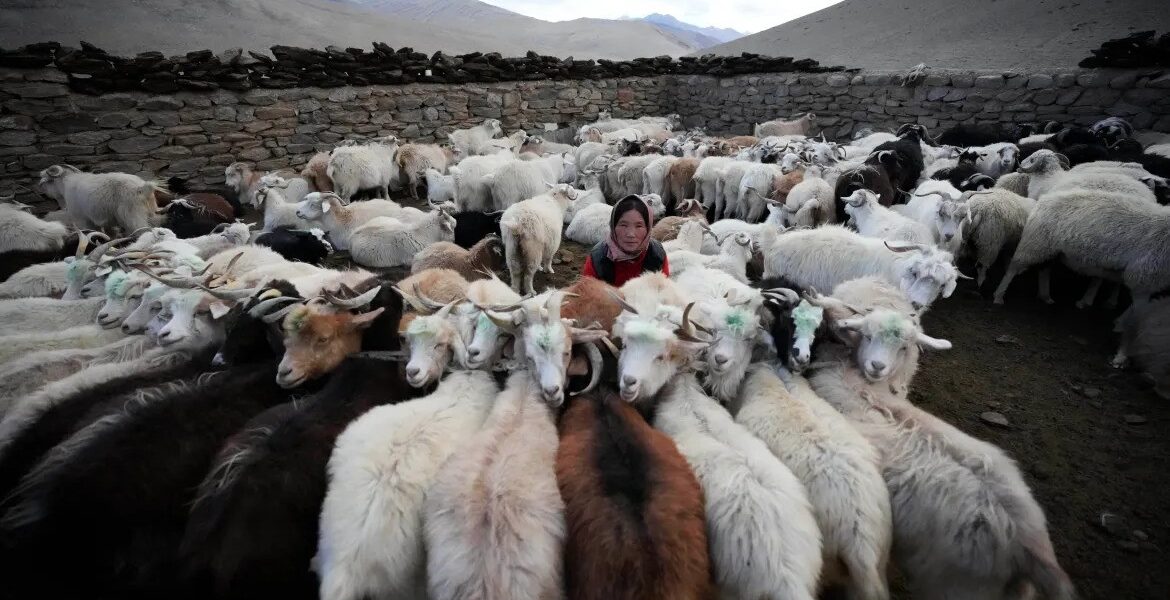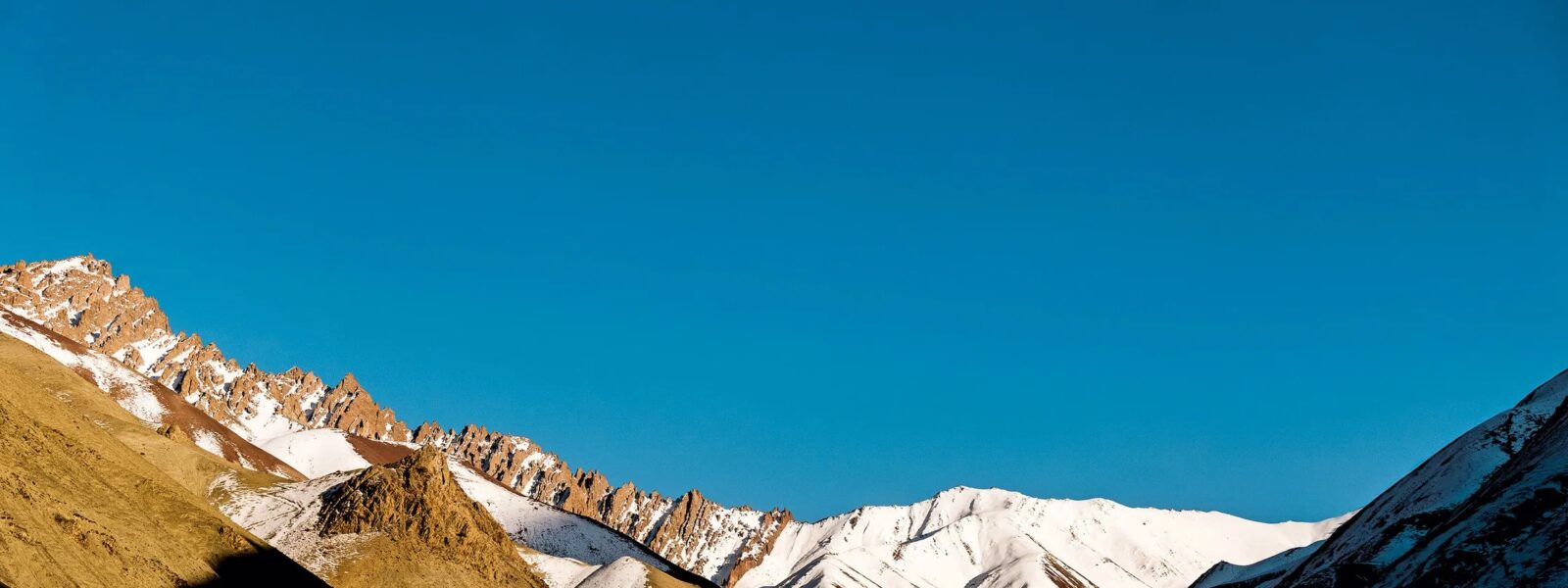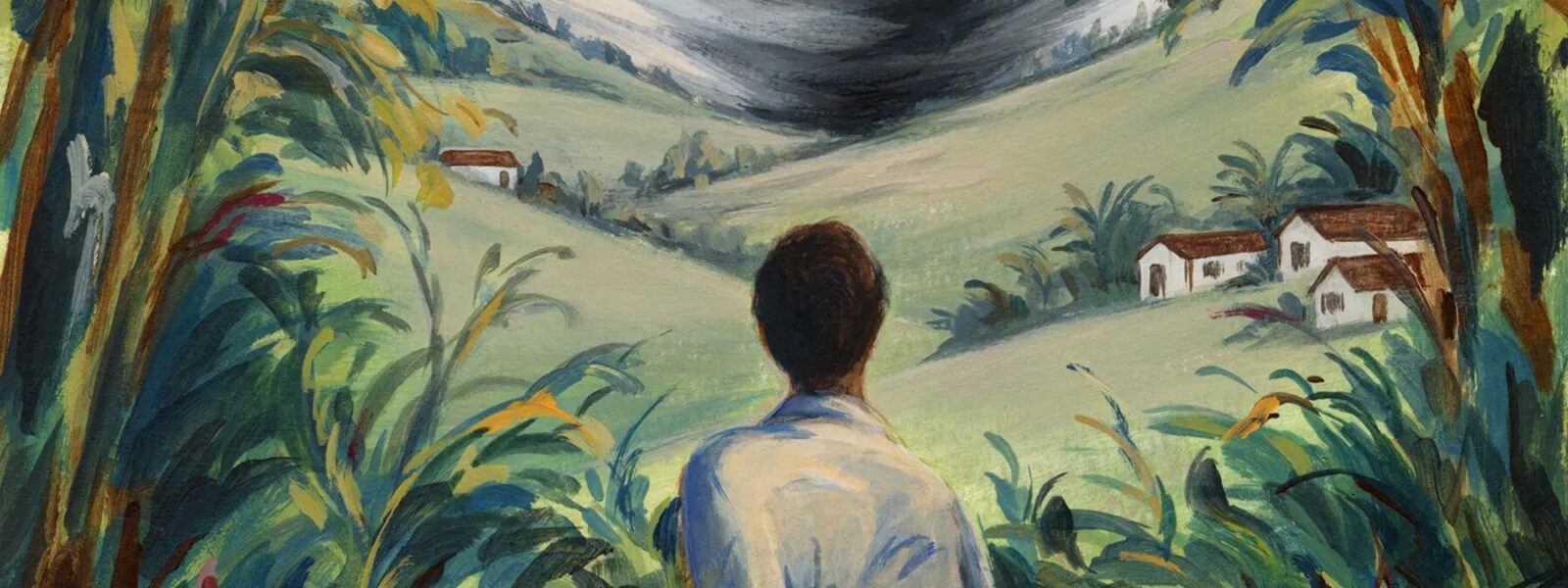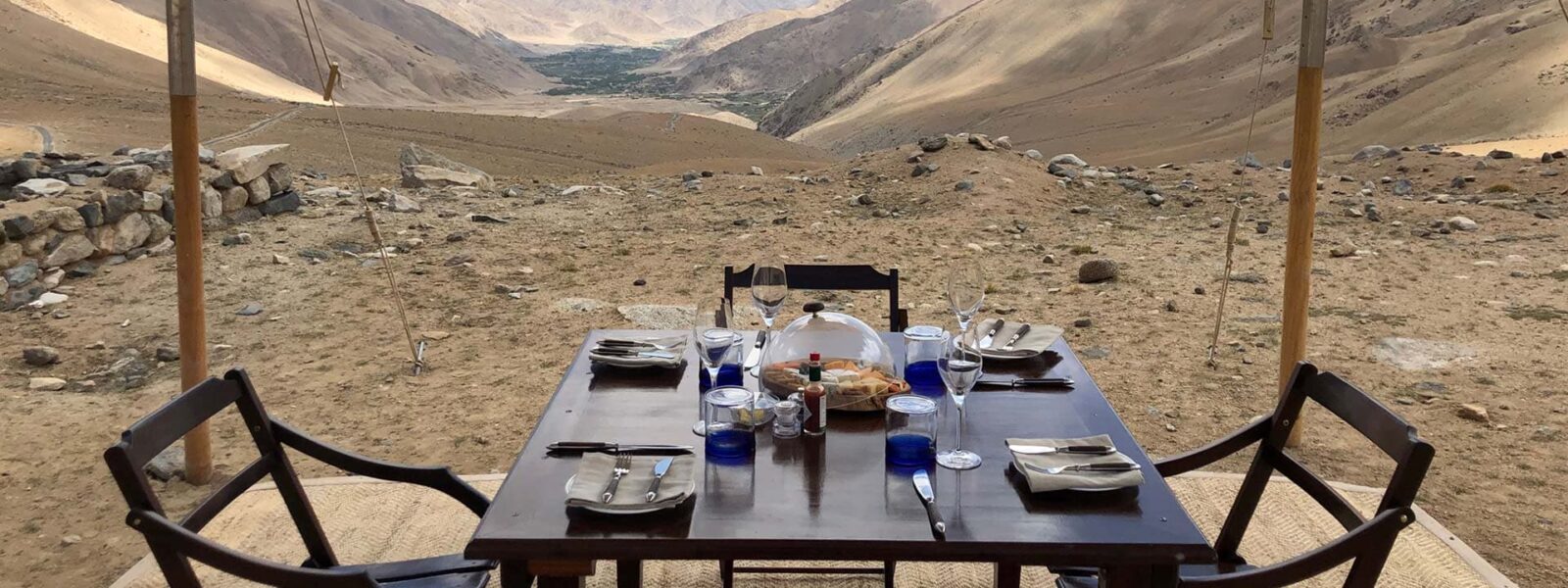India’s Most Extreme Road Adventure Begins Here
If you think you’ve driven on high mountain roads before, think again. Tucked away in the remote, wind-swept plateaus of Eastern Ladakh lies a route so surreal, so daring, that even the most seasoned overlanders whisper its name with awe — Umling La Pass. Rising to a staggering altitude of 5,798 meters (19,024 feet), this isolated stretch of asphalt is now officially the highest motorable road on Earth.
But reaching this rooftop of the world isn’t as simple as punching directions into a GPS. There are no gas stations, no tourist shops, and no second chances if you get it wrong. The road from the tiny settlement of Hanle to Umling La is both breathtaking and brutal — a raw journey across the high-altitude desert of Ladakh, close to the border with China, where nature reigns and the oxygen thins.
What makes this adventure exceptional is not just the altitude, but the isolation. Unlike more trafficked Himalayan routes like Khardung La or Rohtang Pass, the path to Umling La is untouched by the usual tourist circuit. It’s a realm of stark silence, powdery winds, and landscapes that resemble the lunar surface more than any place on Earth. And the thrill? It lies in the challenge — the driving itself becomes a rite of passage.
This article is crafted for those who crave more than just photographs — it’s for the bold ones who dream of conquering the unknown, of driving beyond limits, and standing atop the world with nothing but snow peaks and sky in every direction. Whether you’re coming from Leh, passing by Tso Moriri, or following the Chushul–Demchok circuit, this guide will provide you everything: from routes and permits to survival tips, road conditions, and the best time to go.
Join us as we take you on an unforgettable ride through the Changthang Plateau, crossing valleys carved by ancient winds, where your engine hums and your heart races. This is not just a drive — it’s a story you’ll be telling for the rest of your life.

Where is Umling La Pass?
Far beyond the crowded trails of Leh and the better-known circuits of Nubra or Pangong lies a lesser-traveled frontier — a place that barely registers on standard maps but ignites the imagination of every true explorer. Umling La Pass is nestled deep in the Changthang region of Eastern Ladakh, close to the sensitive border zones of India and China. This is not your average tourist destination; this is high-altitude wilderness where military trucks outnumber travelers, and the only constant is the wind.
Located in the Nyoma subdivision of Ladakh, Umling La connects the tiny villages of Demchok and Chisumle — names that rarely make it to travel blogs, but are vital nodes in India’s high-altitude border logistics network. The pass is part of a strategically important route built and maintained by the Border Roads Organization (BRO), designed originally for military movement but now accessible to civilians with the right permissions. It stands at an astonishing elevation of 5,798 meters, towering above even the famed Khardung La and Marsimik La.
What makes Umling La even more surreal is its context. This is a land of barren beauty — wide-open skies, sharp mountain ridges, and landscapes that shift from ochre to white as you climb. The altitude is unforgiving, the environment extreme, and the human presence minimal. The nearest village with basic facilities is Hanle, around 75 to 90 kilometers away depending on the route, and that itself is considered remote by Ladakhi standards.
For travelers coming from Leh, reaching Umling La requires a multi-day journey through the sparsely inhabited reaches of the Changthang Plateau. It is typically approached via Hanle village, which serves as a base for acclimatization and vehicle preparation. While the area is now accessible to civilians, it’s important to remember that you’re driving through a region with military sensitivity. Special Inner Line Permits (ILP) and sometimes additional clearances are mandatory.
In short, Umling La isn’t just a point on the map — it’s a statement. A statement of endurance, ambition, and respect for the raw power of nature. It’s the kind of place where GPS may fail, but your instincts — and a well-prepared vehicle — will guide you through. Welcome to the road less traveled.

Why Hanle to Umling La is a Bucket-List Road Trip
Some journeys are planned. Others are felt. The road from Hanle to Umling La Pass falls into the latter category — a soul-stirring adventure that leaves tread marks not just on rugged terrain, but on the heart. Often bypassed by mainstream travel narratives, this route is one of the most dramatic and humbling high-altitude drives anywhere on Earth. If you’re the kind of traveler who seeks silence over selfie spots and wilderness over Wi-Fi, this is your road.
So, what makes this drive so special? It starts in Hanle, a sleepy village known for its world-class astronomical observatory and unfiltered starlit skies. But it’s what lies beyond that transforms the journey into a legend. As you leave Hanle and make your way toward Umling La, the landscape begins to shift — subtly at first, then dramatically. The rolling Changthang plains give way to steep inclines, wild riverbeds, loose gravel, and snow-laced passes. There are no petrol pumps, no restaurants, no shops. Just you, your vehicle, and the rhythm of your breath as it adjusts to altitudes above 5,500 meters.
This is not a road trip in the conventional sense. It is an expedition into isolation. Every kilometer feels earned. Every bend reveals a new shade of the Himalayas — cobalt lakes, dust storms sweeping the flats, and lone chortens standing as silent witnesses to time. You won’t find traffic jams here. You might not even see another traveler for hours. The route is so remote that you begin to feel the vastness of Ladakh in your bones. And yet, there’s something comforting in its desolation — a sense that you’re treading ground very few ever will.
Unlike drives to Pangong Tso or Magnetic Hill, the Hanle to Umling La journey is not just about the destination — it’s about the inner transformation it stirs. With altitude sickness a real concern and temperatures dropping below freezing even in summer, the challenge is as physical as it is emotional. But that’s exactly what makes it unforgettable. Those who reach Umling La don’t just arrive — they ascend.
For thrill-seekers, overlanders, photographers, and anyone with a thirst for the extraordinary, this road trip is a dream written in dust and silence. It’s not on everyone’s list — and that’s exactly why it should be on yours.
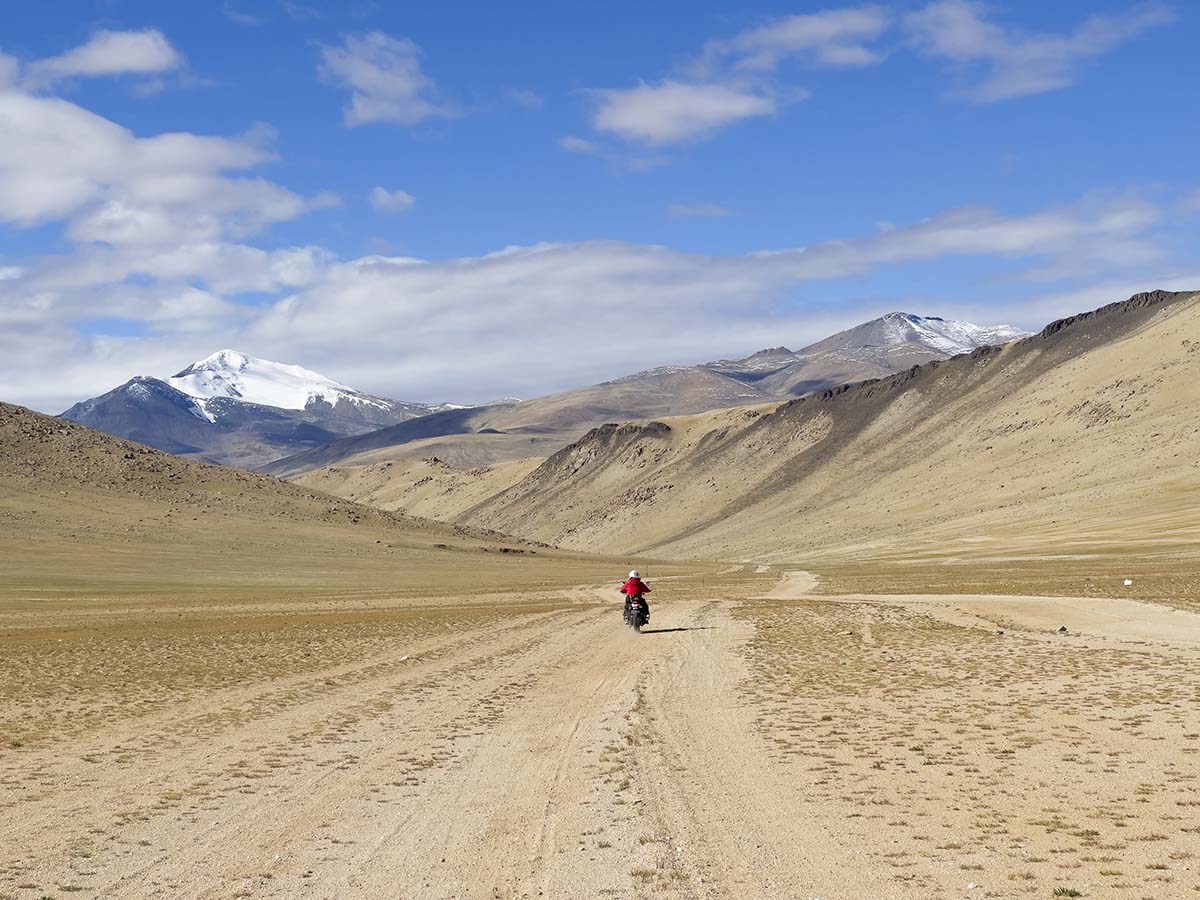
How to Reach Umling La Pass from Hanle
The road to Umling La Pass is not just a straight line etched into a map — it’s a shifting ribbon of asphalt and dirt winding through one of the highest and most secluded corners of the planet. To reach this sky-piercing route from Hanle, travelers must navigate unmarked paths, cross riverbeds, and ascend through altitudes where machines strain and lungs burn. But the reward? A front-row seat to the most surreal landscapes Ladakh has to offer.
Hanle, perched at an altitude of about 4,250 meters, is the last major village before you begin the real ascent. From here, the distance to Umling La ranges between 75 to 90 kilometers, depending on the exact route chosen and current road conditions. While the distance might seem manageable, don’t be fooled — this stretch can take up to 4–6 hours due to the rough terrain, steep gradients, and unpredictable weather.
There are two commonly used routes to reach Umling La from Hanle:
- Route 1: Hanle – Photi La – Umling La
This is the most direct and scenic route. From Hanle, you drive towards Photi La Pass (approx. 5,520m), and descend into the Photi La–Umling La valley. The climb from here to Umling La is tough but spectacular, with multiple switchbacks and panoramic views that stretch into Tibet on clear days. - Route 2: Hanle – Ukdungle – Demchok – Umling La
This route passes close to the Demchok sector and often requires special military permissions. It is used primarily by the Border Roads Organization (BRO) and may be restricted for civilian use depending on geopolitical conditions. Always check with local authorities or your permit-issuing agency before attempting this route.
Regardless of the route, you’ll be driving through high-altitude terrain where vehicles lose power and fuel efficiency drops dramatically. It’s recommended to use a well-maintained 4×4 vehicle or high-ground-clearance SUV. Motorcycles are also a popular choice, but only for experienced riders equipped with cold-weather gear and altitude preparedness.
There are no fuel stations beyond Nyoma, so it is absolutely essential to carry extra fuel. Mobile connectivity is non-existent, and GPS may become unreliable. Download offline maps, inform someone of your route, and start early to avoid afternoon snow or windstorms, which are common at these elevations.
The route from Hanle to Umling La is not marked by signboards or roadside stalls — it’s marked by instinct, adventure, and the quiet presence of the mountains. Here, your compass is your courage. And with every kilometer climbed, you inch closer to the sky — literally and metaphorically.
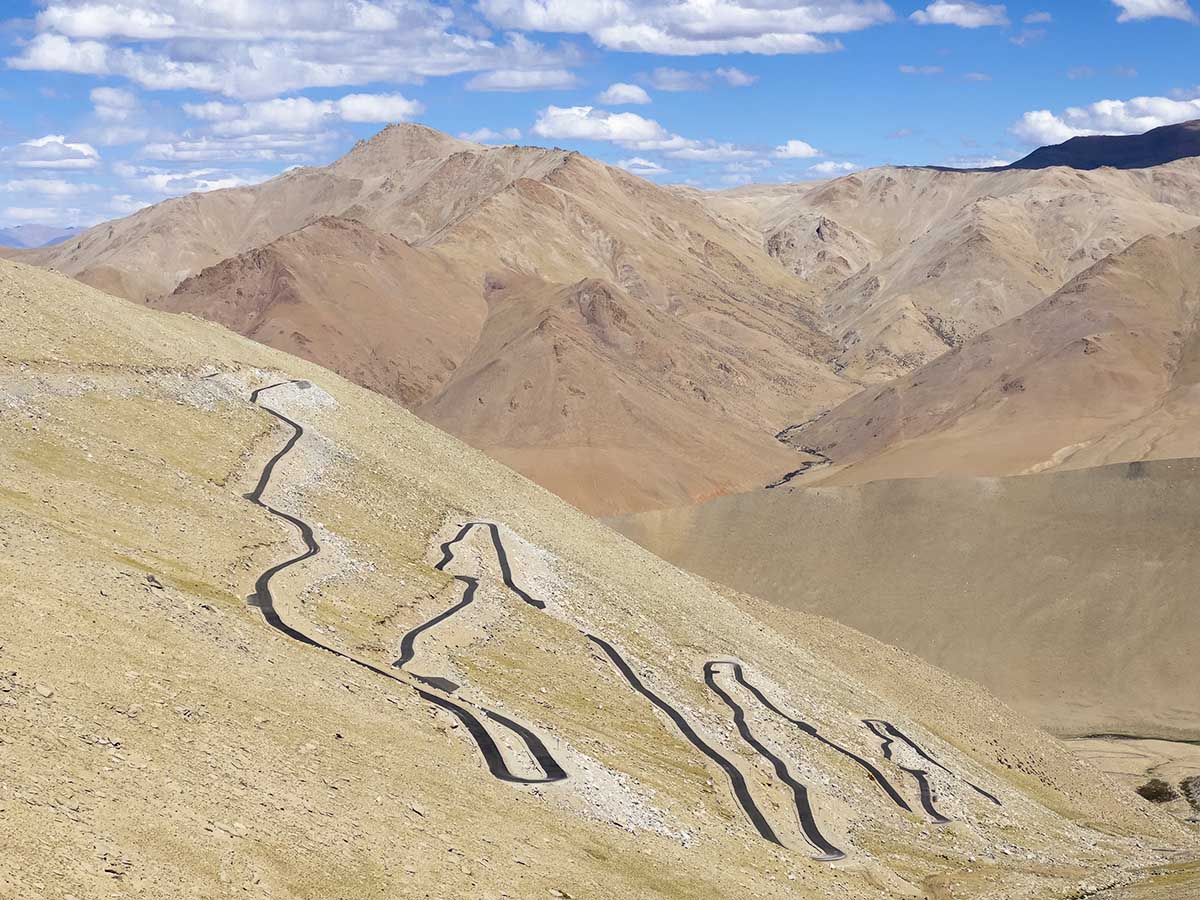
Travel Permits & Entry Regulations
Before you pack your gear and head toward the sky-scraping roads of Eastern Ladakh, there’s one critical step you can’t overlook — permits. The route to Umling La Pass, being in close proximity to the Indo-China border, falls under India’s sensitive border region protocols. That means every civilian traveler must obtain appropriate permissions, and not all areas are open to everyone at all times.
To access Hanle and Umling La, Indian nationals must secure an Inner Line Permit (ILP), issued by the Deputy Commissioner’s Office in Leh. This permit is mandatory for most of the Changthang region, including Hanle, Nyoma, and Loma. You can either apply online through the Leh District Administration website or do it in person after arriving in Leh. In both cases, ensure your itinerary includes all the villages and checkpoints on your route.
However, visiting Umling La specifically is more complicated. While it was previously off-limits, it has gradually opened to domestic travelers — but with caveats. In addition to the ILP, you may be required to obtain a special permission letter endorsed by the Sub-Divisional Magistrate (SDM) of Nyoma, or at times directly through the Indian Army or BRO checkpoints depending on real-time conditions. It’s always advisable to check the current access status before departing from Leh, as military permissions can change without notice.
At the moment, foreign nationals are not allowed to travel to Umling La or Hanle due to heightened border security concerns. Even if holding a Protected Area Permit (PAP), foreigners are typically limited to areas like Pangong Tso, Tso Moriri, and Nubra Valley. Attempts to travel to restricted zones may result in being turned back at military posts or fined.
It’s also worth noting that travel agencies and registered guides often have a better chance of securing permits due to their familiarity with local processes. If you’re not confident in navigating these approvals yourself, it’s recommended to plan your journey through a local operator based in Leh or Hanle. They can arrange the paperwork, check status updates from BRO, and ensure your route is cleared for travel.
And one more thing: always carry multiple photocopies of your permits, valid ID proof (Aadhaar card or passport), and vehicle documents. These are frequently requested at security checkpoints along the route. You’ll also need to log your journey at ITBP or army camps near Loma and Photi La.
In summary, while the road to Umling La is open — it isn’t without restrictions. Stay informed, stay respectful of local protocols, and remember: access to these raw, untouched landscapes is a privilege, not a right.
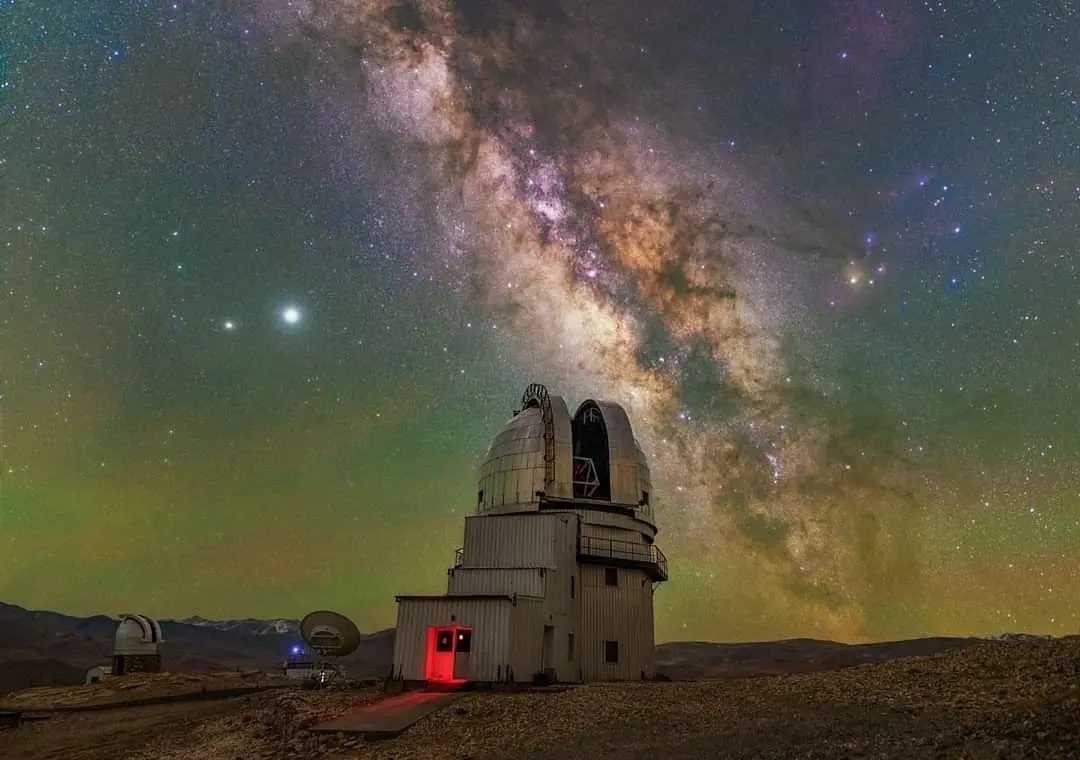
Best Time to Visit Umling La
When it comes to conquering the world’s highest motorable road, timing is everything. The best time to visit Umling La Pass is from late May to early October, when the snow has cleared, skies are more stable, and the roads are (relatively) accessible. Outside this window, the weather turns unpredictable and brutal — with snowstorms, sub-zero temperatures, and road closures making the journey not only challenging, but often impossible.
Even during the summer months, this isn’t your typical “pleasant weather” scenario. You’re in the high-altitude cold desert of Ladakh, where the sun can burn in the day and the wind can chill your bones by night. At Umling La’s extreme altitude of nearly 5,800 meters, oxygen levels are about 50% of what they are at sea level. That means your body — and your vehicle — need to be in peak condition.
June to September is generally considered the safest and most suitable period for civilian travel. During this time, the roads from Leh to Hanle, and further from Hanle to Umling La, are maintained by the Border Roads Organization (BRO) and are usually free from heavy snow. Visibility is better, and although the terrain remains rugged, the chance of getting stranded is significantly lower.
If you’re seeking slightly warmer conditions, August and early September offer the most favorable climate. The roads are dry, skies are often clear, and the winds, though fierce, are more manageable. That said, flash snowstorms can still hit without warning, especially near passes like Photi La or Ukdungle. Always keep an extra buffer day in your plan — flexibility is key in these mountains.
Monsoon concerns are minimal in this region as Changthang lies in a rain shadow zone, but sporadic showers may affect connecting roads from Manali or Srinagar to Leh. Therefore, always check road conditions not just in Ladakh, but on your entire access route.
Pro tip: Start your journey early in the morning. By afternoon, strong winds and sudden temperature drops can make driving at high altitudes more dangerous. Local drivers and army vehicles usually begin before sunrise to make the most of calm morning conditions.
Planning your trip in the right season doesn’t just increase your chance of reaching Umling La — it dramatically enhances the experience. The play of light over vast plateaus, the tranquility of the route, and the majestic silence of the Himalayas are best witnessed when the weather is on your side. Choose your window wisely, and the road will welcome you like a secret revealed.
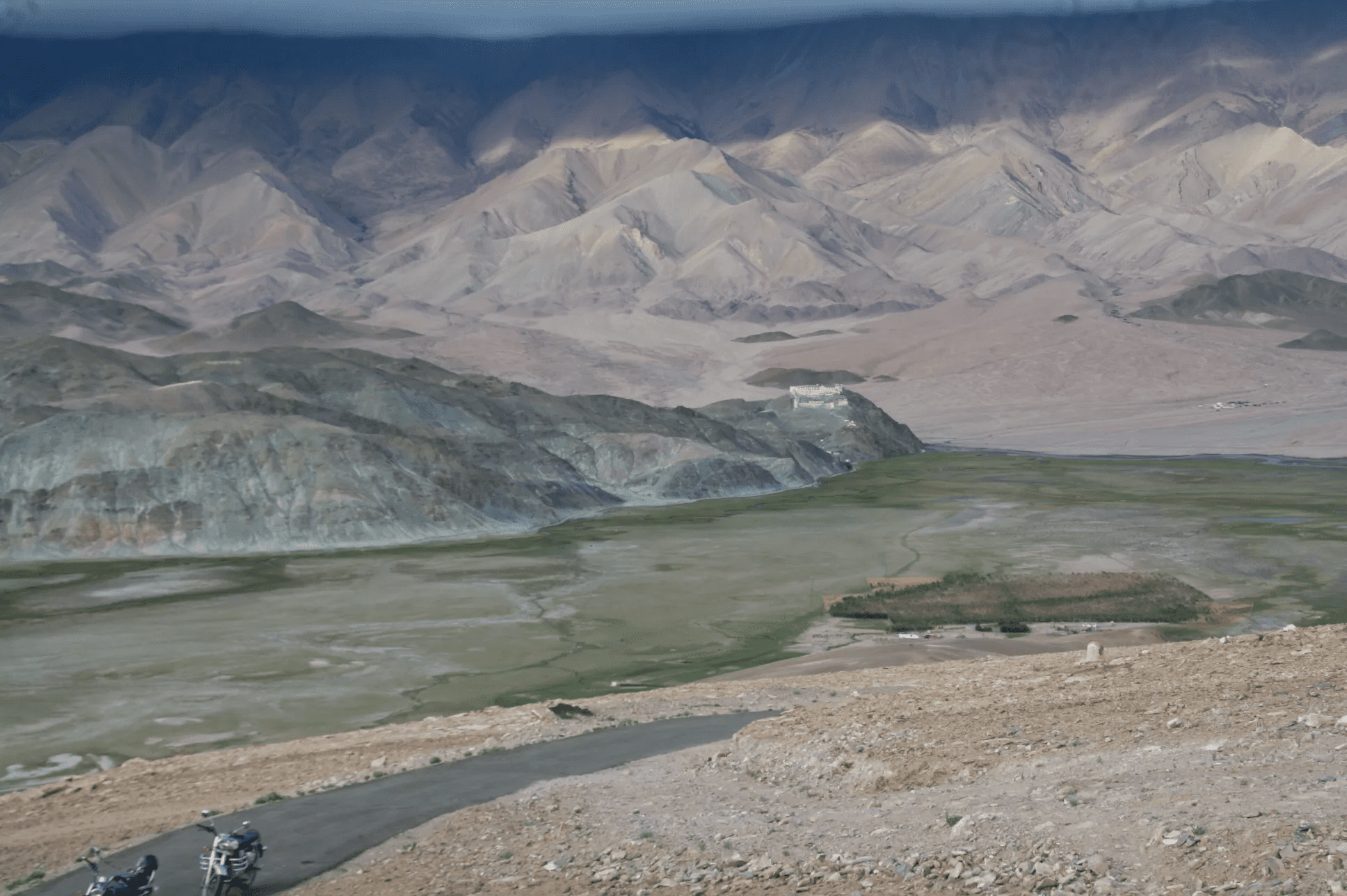
Hanle: The Last Village Before the Pass
Every great adventure has a quiet beginning — and for the road to Umling La Pass, that beginning is Hanle</strong. Tucked into a remote corner of the Changthang Plateau, this high-altitude settlement is not just a waypoint on your GPS — it is a place of rare serenity, lunar-like beauty, and quiet resilience. As the final inhabited village before the climb to the world’s highest motorable road, Hanle plays a crucial role in the journey. It’s where travelers rest, refuel (mentally, not mechanically), and acclimatize to the thin air before ascending into the silence of the sky.
At an altitude of approximately 4,250 meters (13,940 ft), Hanle might seem small and sleepy, but it is packed with quiet significance. Dominated by sweeping valleys and ringed by ochre mountains, it is home to both ancient Tibetan Buddhist culture and cutting-edge science. The village is most famous for the Indian Astronomical Observatory — one of the highest altitude observatories in the world. On clear nights, the sky above Hanle becomes a canvas of stars, galaxies, and constellations, unmarred by light pollution. This makes it a magnet for astrophotographers and space enthusiasts alike.
The people of Hanle belong largely to the Changpa nomadic community, known for their endurance and deep relationship with the land. You’ll find a handful of homestays and guesthouses that offer warm Ladakhi hospitality — steaming bowls of thukpa, butter tea, and cozy rooms lined with wool blankets. While basic in amenities, staying here gives you a vital chance to rest and adjust to the altitude before attempting the higher climbs toward Photi La and Umling La.
Despite its remoteness, Hanle is surprisingly self-sufficient. Solar panels glint on rooftops, satellite dishes peek over stone walls, and locals go about their day-to-day lives with quiet dignity. The monastery — Hanle Gompa — sits peacefully on a ridge overlooking the valley, offering a panoramic view that feels almost holy in its silence. For travelers with time, a short visit to the gompa before hitting the Umling La trail adds a moment of reflection to the expedition.
Importantly, this is also your last stop to check all essentials. There are no fuel stations, no repair shops, and no mobile connectivity beyond this point. Top up your spare fuel cans, recheck your vehicle, and ensure you’re carrying food, water, first-aid, and any altitude medication you might need. Once you leave Hanle, you’re truly on your own — and that’s what makes the journey magical.
In a world rushing forward, Hanle lingers. It is a pause. A breath. A village that teaches you how to slow down and listen — not to the noise, but to the pulse of the mountains. And from here, the real adventure begins.
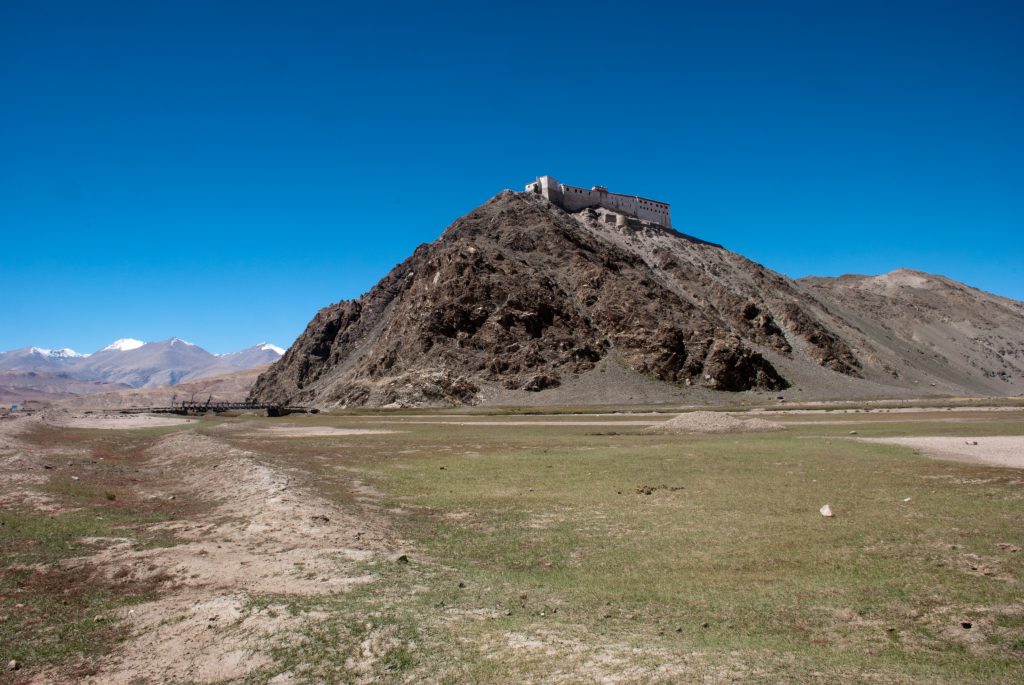
Umling La Altitude, Weather, and Road Conditions
There are high-altitude roads. And then there’s Umling La. At an unbelievable elevation of 5,798 meters (19,024 feet), this remote Himalayan pass is not just the highest motorable road in India — it’s the highest on the planet. Higher than Khardung La. Higher than Marsimik La. Even higher than the base camps of many iconic mountains. Driving here is not just a journey — it’s a vertical achievement.
But altitude at this level comes with a cost. The air at Umling La is razor-thin, with oxygen levels dropping to almost half of what they are at sea level. The human body feels it instantly: shortness of breath, fatigue, headaches, and in some cases, symptoms of Acute Mountain Sickness (AMS). That’s why proper acclimatization — ideally in Hanle or Nyoma — is non-negotiable before attempting this drive.
As for the weather at Umling La, expect extremes. Even in the summer months, daytime temperatures rarely rise above 5°C, while nights can plunge well below freezing. The pass is known for its icy winds, unpredictable snow flurries, and sudden whiteouts. In winter, the road is buried under thick snow and becomes completely impassable — often until late May or early June.
The road conditions are, surprisingly, better than one might expect for such a remote frontier. Thanks to the relentless efforts of the Border Roads Organization (BRO), much of the stretch leading up to Umling La is now paved with well-compacted blacktop. However, do not mistake paved for easy. Steep gradients, sharp hairpin bends, loose gravel, and frozen patches can appear without warning. Low visibility due to dust or snow is common, and guardrails are virtually non-existent.
It’s also important to keep in mind that this region sees very little traffic. In the event of a vehicle breakdown, help may be hours or even days away. Hence, a well-serviced 4×4 vehicle is essential, along with spare tires, extra fuel, and a mechanical toolkit. Many riders prefer motorcycles for the thrill, but only seasoned bikers with prior high-altitude experience should consider it.
Expect to pass through security checkpoints along the way. Military camps near Loma, Ukdungle, or Photi La will require permit verification and travel logs. Photography is often prohibited in certain sections, especially close to border-facing areas. Always follow posted signs and the guidance of local authorities.
The landscape at Umling La feels otherworldly. Stark, windswept ridgelines stretch toward Tibet, while the road itself seems to float between sky and earth. Time slows here. Thoughts quiet down. And in that thin, silent air, you realize: you’ve reached a place where few have stood — a place where the road ends, but the story begins.
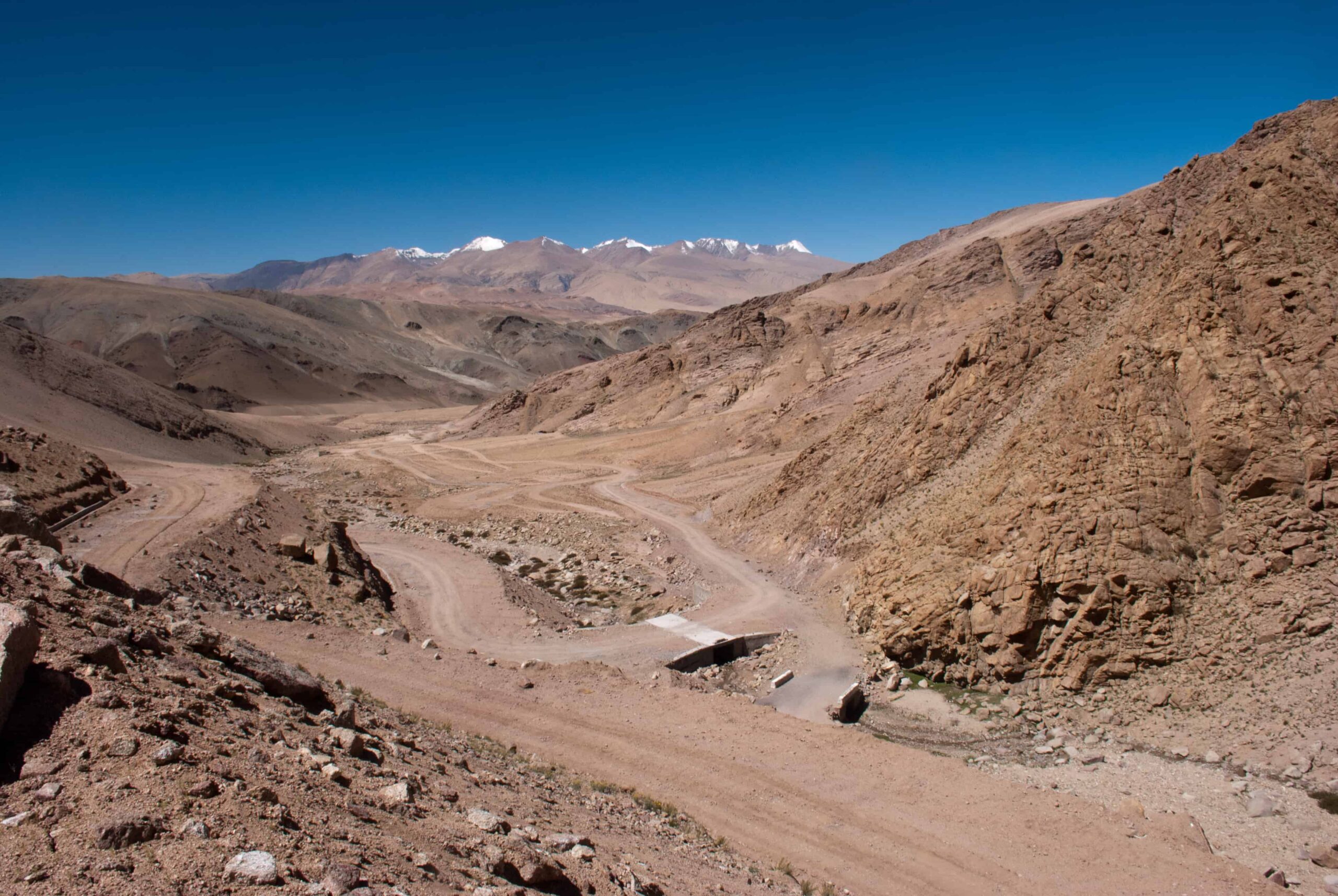
Essential Packing List for Umling La Road Trip
When you’re preparing to drive to the highest motorable road in the world, packing becomes more than a formality — it becomes a survival strategy. Unlike road trips in more populated regions, the journey from Hanle to Umling La Pass offers no shops, no roadside assistance, and no second chances. Once you leave Hanle, you are entering one of the most remote and high-altitude regions on Earth. What you pack will not only define your comfort — it may define whether you make it to the top safely.
Here is a carefully curated packing list that covers both essentials and smart additions for a high-altitude road trip in Ladakh:
- Warm layered clothing: Temperatures at Umling La can drop below freezing even in summer. Pack thermal base layers, a fleece jacket, an insulated down jacket, gloves, beanies, and windproof outer shells.
- High-altitude medicines: Include Diamox (after consulting a doctor), paracetamol, nausea tablets, painkillers, and rehydration salts. Carry personal medications and a basic first-aid kit with bandages and antiseptic.
- Oxygen support: Portable oxygen cylinders or cans are highly recommended, especially if you’re prone to AMS or traveling with elders. Altitude can affect anyone — even seasoned trekkers.
- Food & hydration: Carry energy bars, dry fruits, ready-to-eat meals, instant noodles, and plenty of drinking water. Dehydration increases the risk of altitude sickness, so drink consistently, even if you don’t feel thirsty.
- Fuel & vehicle essentials: Fill your tank in Nyoma and carry a minimum of 20L extra fuel in jerry cans. Include a spare tire, air pump, puncture repair kit, coolant, engine oil, and essential spares.
- Navigation tools: GPS may fail beyond Hanle. Download offline maps like Maps.me or have a physical route map. A simple compass can be helpful when electronic devices stop working.
- Documents & permits: Keep multiple photocopies of your Inner Line Permit, ID proof (Aadhaar card or passport), and vehicle registration papers. You will need them at several military checkpoints.
- Power backup: A fully charged power bank, spare phone battery, and solar charger can make a big difference in a place with no electricity or mobile signal.
- Personal care & protection: Sunscreen (SPF 50+), lip balm, sunglasses (UV-protected), and a good moisturizer are crucial. The sun and wind at these altitudes can be harsh on your skin.
- Sleeping gear (optional): If you plan to camp or stop en route, a high-altitude sleeping bag, ground mat, and windproof tent are necessary. Remember that sleeping above 5,000m is risky without proper acclimatization.
A word of advice: travel light, but smart. Every item should serve a purpose. Remember, there are no second chances once you’re en route to Umling La. Preparation is your safety net. Pack with intent, and the mountains will welcome you.
This is not just a drive — it’s a test of resilience, awareness, and respect for nature’s extremes. When you’re well-prepared, the silence of the high desert becomes a symphony. And you, just a small dot on the world’s highest road, become part of something far greater.

Tips for Driving to the World’s Highest Motorable Road
Driving to Umling La Pass isn’t just about horsepower — it’s about headspace. It’s about understanding how your vehicle, your body, and your mind react when pushed to their absolute limits. This isn’t a typical Ladakh road trip where you can rely on nearby dhabas, help from fellow travelers, or even a mobile signal. This is frontier driving at its rawest — and you’ll need more than courage to conquer it. You’ll need wisdom.
Here are essential tips for a safe, successful, and memorable drive to the highest motorable road in India:
- Acclimatize before you ascend: Spend at least two nights in Leh and one or two nights in Hanle or Nyoma to allow your body to adjust to the high altitude. Never rush from low elevations to Umling La — AMS can strike fast and hard.
- Start early in the day: Mornings offer better weather, clearer visibility, and calmer winds. Depart Hanle by sunrise if possible. Afternoons in the Changthang region often bring sudden dust storms or snow flurries.
- Drive slow, steady, and strategic: Forget speed. Maintain a steady pace, avoid unnecessary braking or acceleration, and use lower gears on steep climbs. Trust your engine and your judgment.
- Use 4×4 vehicles or high-clearance SUVs: While parts of the road are paved, many stretches include gravel, soft sand, and loose rocks. Ground clearance is critical. Ensure your vehicle is serviced, with brakes, clutch, and tires in top condition.
- Carry spare fuel and be fuel-smart: No fuel stations exist beyond Nyoma. Calculate your mileage accurately and always carry extra fuel in leak-proof jerry cans. Avoid unnecessary idling.
- Don’t travel solo if you can avoid it: Travel with at least one other vehicle or companions, especially if it’s your first time in remote Ladakh. In case of a breakdown, this could be your only backup.
- Listen to your body: Breathlessness, headaches, dizziness, and nausea are signs of altitude sickness. If symptoms worsen, descend immediately. Don’t wait for it to pass — the mountains don’t wait.
- Respect the army and restricted zones: You’ll pass by multiple military installations. Always stop when requested, show permits without argument, and avoid photography where prohibited. You’re a guest here — act accordingly.
- Don’t trust Google Maps blindly: In this region, offline maps or old-school navigation often serve better. Download trusted navigation apps beforehand and check with locals if unsure.
- Have a buffer day in your itinerary: Flexibility is key. Weather, military restrictions, or minor altitude illness can delay plans. A spare day lets you adapt without stress.
Finally, adopt the most important rule: Leave no trace. Carry all waste back with you, respect the fragile high-altitude ecosystem, and don’t disturb the wild silence that makes this place sacred. Remember, the road to Umling La is not about conquering nature — it’s about earning her respect.
Drive with care. Drive with humility. And when you finally reach the top, switch off the engine, step out quietly, and just look around. There will be no applause, no fanfare — just the endless sky, whispering that you made it.
Frequently Asked Questions (FAQ)
As Umling La gains fame among thrill-seekers and explorers, many practical questions arise for those planning the journey. Below are answers to the most common queries from travelers attempting to reach the highest motorable road in the world. These answers are based on local insights, current regulations, and the most up-to-date travel experiences available.
Is Umling La Pass open to tourists in 2025?
Yes, as of the 2025 travel season, Umling La is open to Indian nationals with valid permits. However, due to its proximity to the China border and potential for shifting military guidelines, access can be temporarily restricted. Always confirm local regulations with your tour operator or the Leh DC office before traveling.
Can foreign nationals visit Umling La?
No, foreign nationals are currently not permitted to travel to Umling La or the Hanle–Demchok region. Even with a Protected Area Permit (PAP), access to these sensitive zones remains restricted to Indian citizens only.
Do I need a permit to reach Umling La?
Yes. You must obtain an Inner Line Permit (ILP) that includes Hanle and Nyoma. In many cases, an additional endorsement or letter of permission may be required from local administration or the Sub-Divisional Magistrate (SDM) in Nyoma, especially if traveling near Demchok.
How high is Umling La Pass?
Umling La sits at a jaw-dropping altitude of 5,798 meters (19,024 feet), making it the highest motorable road in the world. At this elevation, oxygen levels are nearly 50% lower than at sea level.
What is the road condition from Hanle to Umling La?
The road is a mix of blacktop and gravel, maintained by the Border Roads Organization (BRO). It’s driveable in good weather, but conditions can change rapidly due to snow, ice, or landslides. Only experienced drivers with 4×4 vehicles or high-clearance SUVs should attempt this route.
Can I ride a motorcycle to Umling La?
Yes, many seasoned bikers have successfully ridden to Umling La. However, due to extreme cold, low oxygen, and terrain challenges, this should only be attempted by experienced riders equipped for high-altitude expeditions.
Is there mobile signal or internet at Umling La?
No. There is no mobile coverage at Umling La or most of the route beyond Hanle. Even in Hanle, signal is extremely limited and may only work for select networks like BSNL. Plan for complete disconnection once you leave Nyoma.
What is the best time of day to drive to Umling La?
Early mornings are ideal — the weather is more stable, winds are calmer, and visibility is better. Most experienced drivers begin their ascent at dawn to avoid late-day snow flurries or dust storms.
Is there any place to eat or stay between Hanle and Umling La?
No. Once you leave Hanle, there are no food stalls, tea shops, or accommodation options until you return. Carry your own food, water, and emergency supplies. Hanle is your final base for lodging and supplies.

Final Thoughts
Some roads are built for traffic. Others, for trade. But a rare few are built for the soul. The road from Hanle to Umling La Pass is not just a route carved through rock and dust — it’s a pilgrimage through silence, a conversation between human will and Himalayan immensity. At nearly 6,000 meters above sea level, the landscape strips everything away: sound, distraction, ego. And what remains is you — small, breathless, and alive.
This journey isn’t for everyone. It’s for those who welcome discomfort, who crave stillness, and who carry more questions than answers. It’s for the drivers who study their engines like old friends, and for the travelers who understand that beauty often begins where convenience ends. There are no luxury hotels here, no cafes with Wi-Fi. Just wind, rock, sky — and a black ribbon of road stretching impossibly high.
But if you are one of those few, the reward is indescribable. Reaching Umling La is not just about elevation — it’s about transformation. The act of getting there changes you. Your breath slows. Your eyes widen. Your sense of time and distance recalibrates. You feel — not above the world, but within it. At one with it. And for a fleeting moment, the borderless beauty of Ladakh leaves an imprint deeper than any photograph ever could.
So plan carefully. Pack wisely. Respect the land and its guardians. And when you finally reach the summit, switch off your engine, step into the thin air, and let the silence speak. You’ll find that on this road, the destination is not a place — it’s a state of being.
Welcome to Umling La. Welcome to the edge of the sky.

